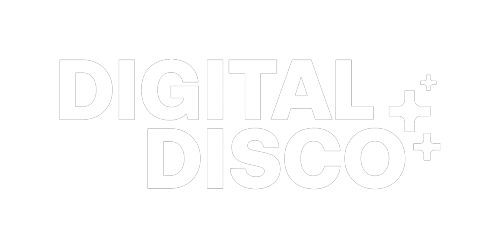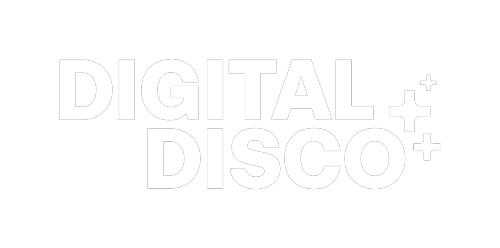10 On-Page SEO Factors You Can DIY
Starting/running/managing your own business is full-on. You have a checklist as long as your leg of things you need to do, and often you feel like you need to do it all yourself - especially when you’re starting up and your budget is smaller than small.
And often that is why search engine optimisation - or SEO - is often put to the side as a “I’ll look at that later” thing to do. Because you don’t have budget to outsource it to a professional, and you don’t really understand it yourself (or have the time to learn). We don’t blame you - at the outset, SEO does look really overly-complicated, overwhelming, technical and just plain scary.
But, we are in the digital era and for your business to have the best chance of success, it is important to understand and follow SEO best practice - or get someone to do it for you. A solid SEO strategy will help your business be found online, and really, what’s the point of spending thousands on a beautiful new website if no one can find it!
And that is where SEO comes in - search engine optimisation is the process of increasing the number of visitors to your website that are genuinely interested in your brand/product/service through organic means (searches that are “free” and don’t come from paid advertising).
SEO Strategies
In a nutshell, there are four core strategies to SEO:
Technical SEO - how well your content can be crawled and indexed by a search engine (like Google)
Content - having the most relevant content for your audience
On-site SEO - the optimisation of your content to make it easy for search engines to understand
Off-site SEO - building the authority to ensure search engines know you’re legit (link building)
The two areas that are often the most difficult to understand without taking a course are the technical aspects and off-site SEO. But just because you may not have a full grasp of these two strategies, doesn’t mean you should ignore SEO altogether.
Content is definitely a strategy you can prioritise - blog articles, videos, social media marketing and so on. Content really is king when it comes to marketing your business these days. And on-site SEO goes hand-in-hand with your content, as it really is the practice of making sure your content can be found. So, if outsourcing your SEO Services Australia is not within the budget just yet, here are 10 on-page factors that you can do yourself to really make the most out of your content!
#1. Start Your Title with Keyword(s)
As you can see in the below example from Moz, the title tag is the title of your page - whether that is a landing page or a blog post. Title tags get shown in search engine results and are clickable, and they are an important part of telling a search engine exactly what the content on the page is about. You should try to include your target keyword in the title tag - and the closer the keyword is to the beginning of the title, the more weight it will have with the search engine.
In this example, “title tag” is the main keyword, and it has been included in the first two words of the title, rather than at the end like “2019 SEO - Title Tag”.
#2. Add Modifiers to Your Title Tag
A modifier is a word or phrase you add to your title to increase your search traffic using long-tail keywords. Using the same example above, “2019 SEO” has been added as a modifier, as this will help bring in people who are specifically searching for SEO in 2019.
Other modifiers could include “best”, “guide”, “review”, or “top”. To add modifiers to the title of this blog post, we could change it to “Top 16 On-Page SEO Factors You Can DIY in 2019”. So, where you can, include a modifier that can help you capture more traffic.
#3. Leverage SEO-Friendly URL’s
Search engines really don’t like long, ugly URL’s, which are URL’s that are too long, improperly structured, undescriptive and/or fragmented. A few tips:
Avoid underscores - use hyphens instead
For blog posts, remove the dates (i.e. don’t use /blog/18.02.19/blog-post-title)
Don’t use numbers - spell them out
Don’t use abbreviations
The shorter the better
Use keywords in the URL
#4. Use Header Tags
Header tags are part of the HTML coding of a web page, but most CMS’s let you apply header tags quite easily (without knowing any coding). Headings are defined with H1 to H6 tags, with H1 defining the most important heading on the page (usually the page title), and then you move down the numbers for sub-headings (H2 through to H6).
By using header tags you are letting search engines know what is the most important bit of information on the page (the H1 - which should have your keyword in it), and how the page is structured, using sub-headings.
#5. Multimedia It Up
Add a bit of flair to your content using images, video, infographics, diagrams etc. Using different types of media will help keep visitors on your site for longer, which will help you reduce your bounce rate and increase your time on site stats (Google Analytics), both of which are counted as user interaction ranking factors by search engines.
#6. Use Your Keyword at the Beginning
While it is important to write your content with your audience in mind first, and search engines second, taking care to make keyword inclusions sound natural and part of the flow, you should try to include your keyword in the first 100 words of your copy, as this will help search bots make the connection between the content and the title.
#7. Use Internal Links
With every piece of content on your site, try to include 2 to 3 internal links to other relevant areas of your website - such as other related blog posts, landing pages or your contact page. These can be simple hyperlinks, or call to action buttons. This will help link pages throughout your site, and provide a more seamless experience to your user.
#8. Use Outbound Links
A lot of people only include internal links, and don’t think to include links to other websites that are relevant. For example, in this post we have included links to other SEO articles where you may want to do some more research. These outbound links act as a relevancy signal to search engines, but just remember that the sites you link to reflect back on you, so try to only link to websites that are legitimate and have authority on the topic you’re writing about.
#9. Boost Your Site Speed
Unfortunately we have very little patience these days - especially when it comes to technology, so if your site is too slow to load, people probably won’t hang around for it to get there. So with every new piece of content, make sure you compress your images, use external hosting platforms (like Youtube for videos) where you can, and make sure you’re using a top-notch host for your website.
#10. Add Social Sharing Buttons
So social shares aren’t actually included as a ranking factor when it comes to SEO, but it has been shown that using social sharing buttons can help to increase the number of people that see your content, and this in turn increases the chances that someone may link to it, which will have a direct impact on your SEO.
Of course, if this is still sitting in the “too-hard basket”, or you just don’t have the time to do these SEO basics, we are here to help - in fact, it why we exist! We’re here to help as your partner in marketing, no matter what you need help with - on-page SEO, content, or the whole lot! Just hit us up and let’s see how we can help get your business ranking!
Want to learn more about SEO? Check out our blog “10 Common SEO Myths Debunked”.



